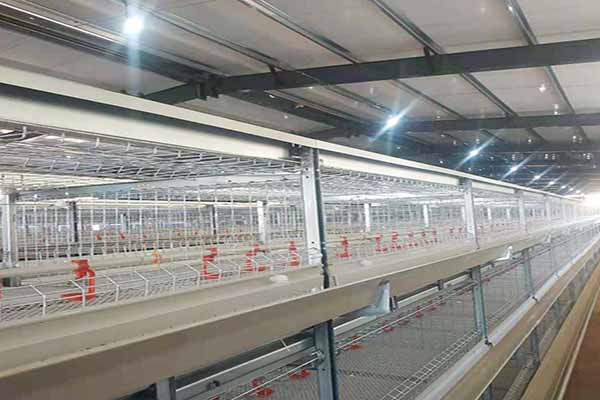Tanzania Chicken Equipment Maintenance Guide
Time : 2025-06-30
Proper maintenance of chicken equipment is crucial for the health and productivity of your flock. In Tanzania, where the poultry industry is rapidly growing, ensuring that your equipment is well-maintained can lead to better yields and economic returns. This comprehensive guide will walk you through the essential steps and considerations for maintaining your chicken equipment in Tanzania.
Introduction to Chicken Equipment
Chicken equipment includes a range of items designed to facilitate the rearing of chickens, from feeders and drinkers to nesting boxes and ventilation systems. Each piece of equipment plays a vital role in the overall well-being of the chickens and the efficiency of the farming operation.
Regular Cleaning and Sanitization
Regular cleaning and sanitization are the cornerstone of equipment maintenance. Here are some key steps to ensure that your equipment remains hygienic and functional:
- Weekly Cleaning: Clean feeders, drinkers, and nesting boxes with a brush and hot, soapy water. Pay special attention to areas where food and droppings accumulate.
- Sanitization: After cleaning, sanitize the equipment with a suitable disinfectant. Chlorhexidine, for example, is commonly used in Tanzania and is effective against a wide range of pathogens.
- Disposal of Waste: Properly dispose of all waste material, including used bedding and food scraps, to prevent the spread of disease and maintain a clean environment.
Maintenance Schedule
Creating a maintenance schedule is essential for ensuring that your equipment is checked and serviced regularly. Here’s a suggested schedule for various types of chicken equipment:
| Equipment Type | Frequency | Activities |
|---|---|---|
| Feeders and Drinkers | Daily | Check for clogs, clean, and ensure proper flow of food and water. |
| Nesting Boxes | Weekly | Remove eggs, clean, and sanitize to prevent the buildup of bacteria. |
| Ventilation Systems | Monthly | Check for blockages, clean, and inspect for any signs of wear and tear. |
| Roosts | Every 6 months | Inspect for splinters and replace if necessary. Clean thoroughly to remove droppings and dust. |
Preventive Maintenance
Preventive maintenance is about addressing issues before they become problems. Here are some proactive steps to take:
- Grease Bearings: Regularly grease moving parts to reduce friction and wear.
- Check for Rust: Inspect metal equipment for rust and treat with an appropriate rust inhibitor.
- Replace Worn Parts: Keep spare parts on hand and replace any worn-out components promptly.
Special Considerations for Tanzania’s Climate
Tanzania’s diverse climate, ranging from arid in the north to humid in the south, requires specific considerations for equipment maintenance:

- Arid Regions: Prevent rust by applying a protective coating to metal equipment, and ensure that all water systems are properly insulated to prevent freezing.
- Humid Regions: Pay special attention to the growth of mold and mildew, which can be a serious health risk to chickens. Use desiccants and maintain good ventilation to control humidity levels.
Professional Help
While many maintenance tasks can be performed in-house, there are instances where professional help is advisable:

- Complex Equipment: For sophisticated equipment like automated feeders or ventilation systems, it’s best to have them serviced by a qualified technician.
- Regular Inspections: Consider hiring a professional to conduct regular inspections of your equipment to identify potential issues early on.
Conclusion
Proper maintenance of chicken equipment is essential for the success of your poultry operation in Tanzania. By following this guide, you can ensure that your equipment remains in good working order, leading to healthier chickens and higher yields. Remember, a well-maintained farm is a productive farm.












